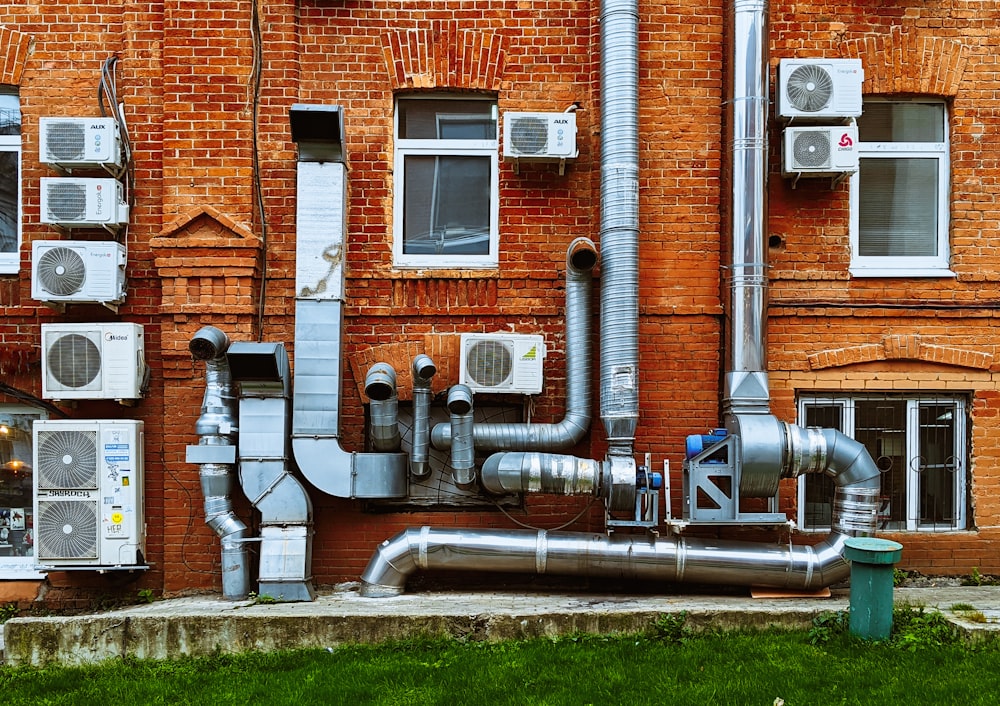Making your basement into a fully habitable living space involves addressing several common challenges, including issues with damp and poor air quality. In the UK, where moisture-related challenges are very common due to the climate, implementing basement ventilation solutions for fresh air and moisture control is an essential step in the basement construction process.
This comprehensive guide explores the range of basement ventilation systems on offer to help you find the best solution for your new basement.
Why Is Basement Ventilation So Important?
Proper ventilation prevents moisture buildup, a common issue in basements due to their proximity to the ground and lack of natural ventilation. Condensation, which occurs when warm, moist air meets cooler surfaces, can lead to mould growth and unpleasant odours.
Basement ventilation systems introduce fresh, dry air into the basement, helping to prevent these issues. Moreover, proper basement ventilation improves indoor air quality by removing allergens, dust and other contaminants, helping you create a safer and healthier basement environment.
Another important aspect is the damage that moisture can do to the structural stability of your property. Damp conditions can weaken foundations, lead to wood rot and corrode metal components, impacting the integrity of the entire building. By implementing a system for ventilation during the basement construction process you can protect your property and create a safe and durable living space under your home.
Benefits of Proper Basement Ventilation
Specific benefits of proper basement ventilation to consider when renovating your basement include:
- Reduced moisture levels. Proper ventilation prevents condensation and the associated problems of mould growth and structural damage.
- Improved indoor air quality. Fresh air circulation helps eliminate stale odours and potential allergens, creating a healthier indoor environment.
- Enhanced energy efficiency. By removing stale air, ventilation helps maintain consistent temperatures, reducing the energy you use to heat and cool the area.
- Reduced risk of respiratory issues associated with mould and mildew.
- Protect belongings stored in the basement from mould and moisture-related damage.
- Compliance with building regulations. UK building regulations specify minimum ventilation rates for all habitable rooms, including basements. For example, a two-bedroom basement dwelling requires a continuous minimum ventilation rate of 25 litres per second, with additional requirements for purge ventilation to expel stale air quickly.
- Proper basement ventilation can help prevent the accumulation of radon gas, a naturally occurring radioactive gas that can seep into buildings and pose serious health risks.
Recommended Basement Ventilation Solutions
In the UK, where damp and high humidity levels are common challenges, selecting an effective basement ventilation solution is crucial for maintaining a dry, healthy and habitable space. However, the best system for your basement will depend on several factors, including the size of your basement, existing moisture levels, overall ventilation in your home and your budget. As a result, it’s always best to consult a professional ventilation specialist to determine the most suitable system for your specific needs.
Here are a few recommendations to get you started.
Cross Ventilation
Cross ventilation relies on air movement between opposite windows or openings in a building. This natural airflow pattern helps to remove stale air and introduce fresh air, effectively ventilating the space. Cross ventilation is most effective in buildings with multiple windows on opposing sides or in buildings with cross-shaped floor plans.
Natural ventilation methods that encourage cross ventilation include open windows and trickle vents, which facilitate natural airflow and allow fresh air to enter and circulate within the basement.
Passive Stack Ventilation
Passive stack ventilation, also known as chimney effect ventilation, relies on the natural upward movement of warm air to create airflow. This system typically involves placing vents at different heights within a building, allowing warm air to rise and escape through the higher vents while cooler air is drawn in through the lower vents. Passive stack ventilation is particularly effective in buildings with high ceilings or in areas with significant temperature differences between the interior and exterior.
Mechanical Extractor Fans
Cross ventilation and passive stack ventilation are the most effective forms of natural ventilation. However, continuous mechanical ventilation may be a better option if obstructions like internal walls hinder natural ventilation, or if you anticipate high levels of humidity in your basement.
For instance, a mechanical extractor fan actively draws stale air and moisture out of your basement through strategically placed ducts, ensuring good air quality regardless of wind direction or outdoor humidity. Additionally, extractor fans can be paired with humidity sensors for automatic activation, adjusting their performance based on the actual moisture levels in your basement. This targeted approach saves energy and prevents over-ventilation, making it a perfect fit for humid-prone spaces like bathrooms, gyms and laundry rooms.
Mechanical Extract Ventilation (MEV) Systems
These systems combine mechanical extractor fans with heat recovery systems to capture and reuse heat from the outgoing air, reducing heating costs. MEV systems are particularly effective in addressing indoor air quality issues, controlling humidity levels and improving overall comfort. MEV systems are also often designed with energy-efficient features, such as variable speed fans, allowing for precise control and reduced energy consumption.
Positive Input Ventilation (PIV) Systems
Positive Input Ventilation (PIV) systems are another type of mechanical ventilation that introduces fresh, filtered air into the basement, creating positive pressure that displaces damp air through natural or ducted openings. They are particularly effective in preventing mould growth.
Condensation Control Units
Condensation control units are specifically designed to combat condensation and regulate moisture levels. They target the root cause of condensation, preventing damp and mould growth. For example, in a basement used as a gym, a CCU equipped with humidity sensors can automatically kick in after a sweaty workout session, eliminating moisture before it condenses on your cold walls.
If you opt for a CCU, make sure you pick the right unit for the specific size and conditions of your basement.
Smart Ventilation Systems
Finally, a smart ventilation system uses a network of sensors to measure various parameters, such as temperature, humidity, carbon dioxide (CO2) levels and pollutants. These sensors provide valuable data to the system's control algorithm so that optimal ventilation settings (fan speed and airflow direction) are maintained at all times. Smart ventilation systems can also be automated to operate independently based on pre-set schedules or occupancy sensors. This eliminates the need for manual adjustments, ensuring consistent basement ventilation throughout the day.
Tags:
Home RenovationJanuary 23, 2024







Comments